
When the kids are clamoring for one of their favorite treats, it can be maddening to find that you've run out of a crucial ingredient. Often, that means an unplanned trip to the store, or at least a frantic visit to an obliging neighbor. Thankfully, many ingredients can be substituted without much difficulty. For example, if your oatmeal cookie recipe calls for quick-cooking oats, you can substitute regular oatmeal instead.
Oats 101
Oats are an unusually nutritious and healthful grain, with high levels of protein and both soluble and insoluble fiber. It's also got more fat than most grains, and that's problematic because enzymes in the oats give those natural oils an "off" flavor very quickly. To counter this, mills steam the oats to deactivate the enzyme and improve the grain's storage life. The steamed oats, or groats, can then be steel-cut into traditional Scots-Irish oatmeal or pressed into rolled oats.
Quick-Cooking vs Regular Oatmeal
The only difference between quick-cooking and regular oatmeal is in the size and thickness of the flakes. Regular or old-fashioned oatmeal is made by pressing entire oat groats, so the flakes are thick and have a chewy texture. Quick-cooking oatmeal is made by pressing coarsely steel-cut oat groats, giving a smaller and thinner flake. At breakfast time that's a big time saver, because quick-cooking oats need only three to five minutes, while regular oatmeal can take 20 minutes or longer to cook.
Your Cookies
In cookies, the difference is less dramatic, but it's still visible. Cookies made with quick-cooking oats have a finer texture and a more even appearance, because the relatively small flakes spread evenly and flatten out as the cookie bakes. When you substitute regular oatmeal, the larger flakes give the cookies a heartier, more robust appearance and ragged edges. They'll also be chewier, rather like granola. After trying the substitution, you might even find you like your cookies better with the big oats.
A Few Tips
You'll probably find that your cookies don't spread as much when you use regular oatmeal, so you'll probably need to flatten them more than usual. It also helps to bake them a bit longer, at 10 degrees Fahrenheit below your normal baking temperature. If your kids don't care for the large oats, you can make them more like quick-cooking oats by pulsing them in your food processor or blender. The very fine "instant"-style oats are too powdery for most cookie recipes, and should only be used as your substitution of last resort.
Related Articles

How to Cook With Kamut
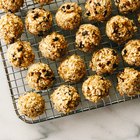
Coconut Breakfast Cookies with Cacao ...
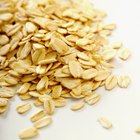
Purpose of Rolled Oats in Baking

How to Cook Oat Groats in a Crock Pot

Shortbread Cookie Recipe

How to Eat Oats Without Sugar
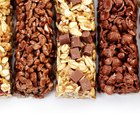
What Is the Difference Between Rolled ...
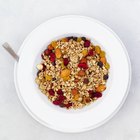
Can I Use Oatmeal for Rolled Oats in ...

How to Make Soft Oatmeal Cookies

Old Fashioned Oats in Place of ...

What Is White Oat?

How to Substitute Applesauce for Butter ...
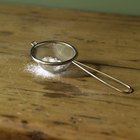
Substitute for Superfine Sugar in ...

How to Cook Steel Cut Oatmeal With a ...
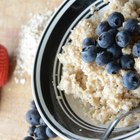
How to Prepare Quaker Oatmeal

Greek Yogurt vs. Plain Yogurt for Baking

How to Cook Old Fashioned Oats in the ...

How to Make Scones

No Bake Cookies With Quick Oats Recipe

Can I Use Ripe Bananas Instead of Oil ...
References
- On Food and Cooking: The Science and Lore of the Kitchen; Harold McGee
- The Cook's Thesaurus: Oats
- Quaker Oats: Baking 101 -- Ingredients & Substitutions
Writer Bio
Fred Decker is a trained chef and certified food-safety trainer. Decker wrote for the Saint John, New Brunswick Telegraph-Journal, and has been published in Canada's Hospitality and Foodservice magazine. He's held positions selling computers, insurance and mutual funds, and was educated at Memorial University of Newfoundland and the Northern Alberta Institute of Technology.
Photo Credits
Thinkstock Images/Comstock/Getty Images